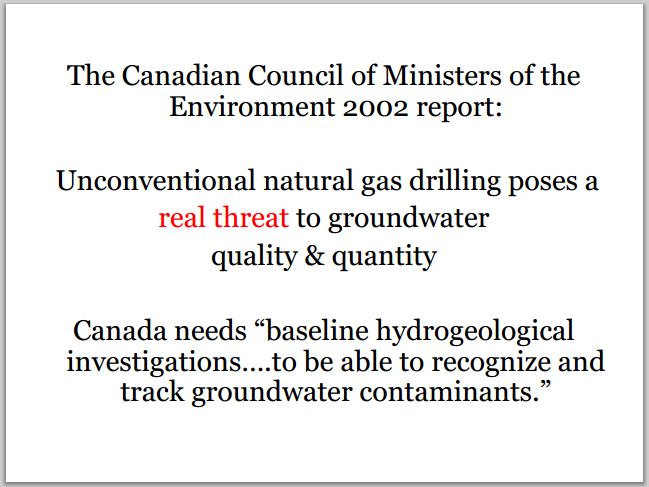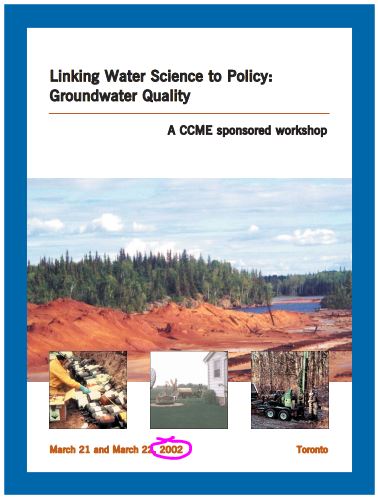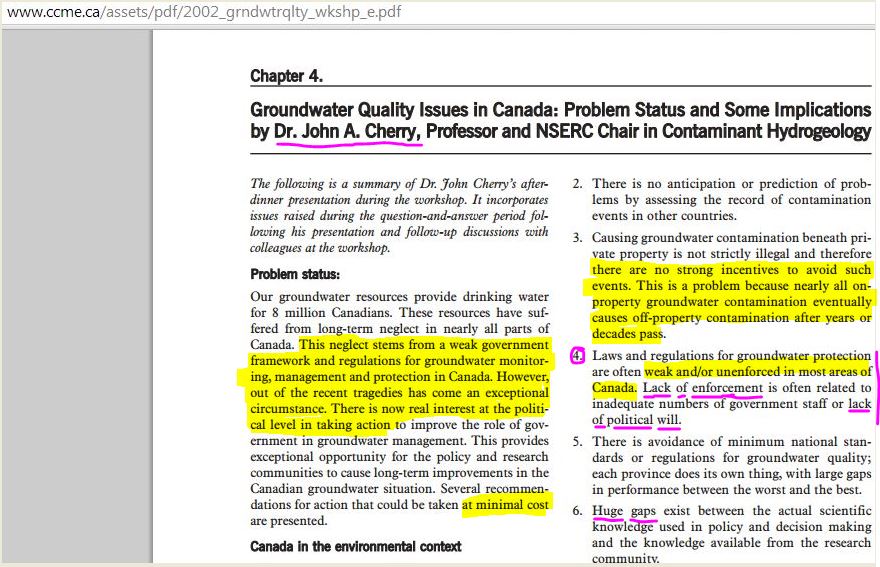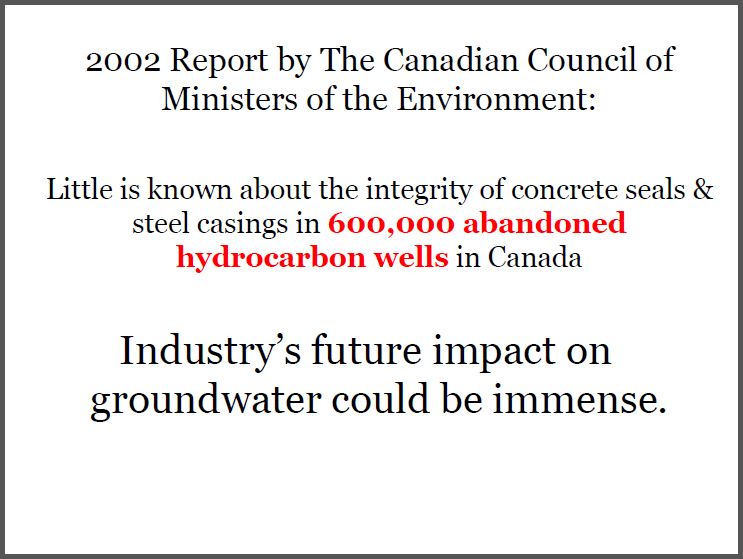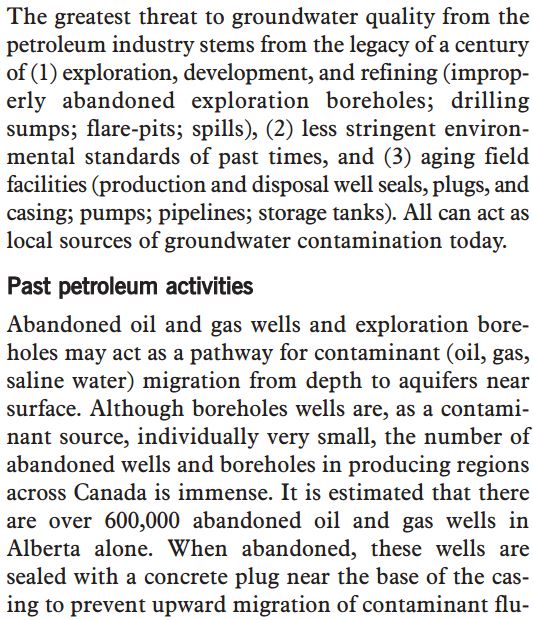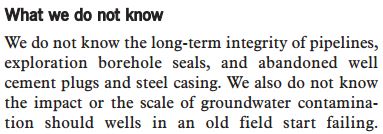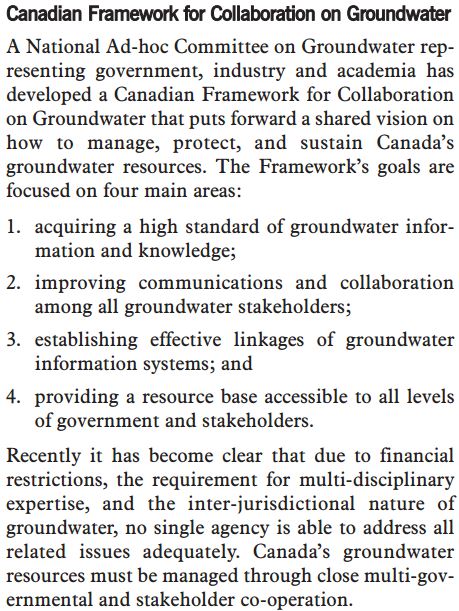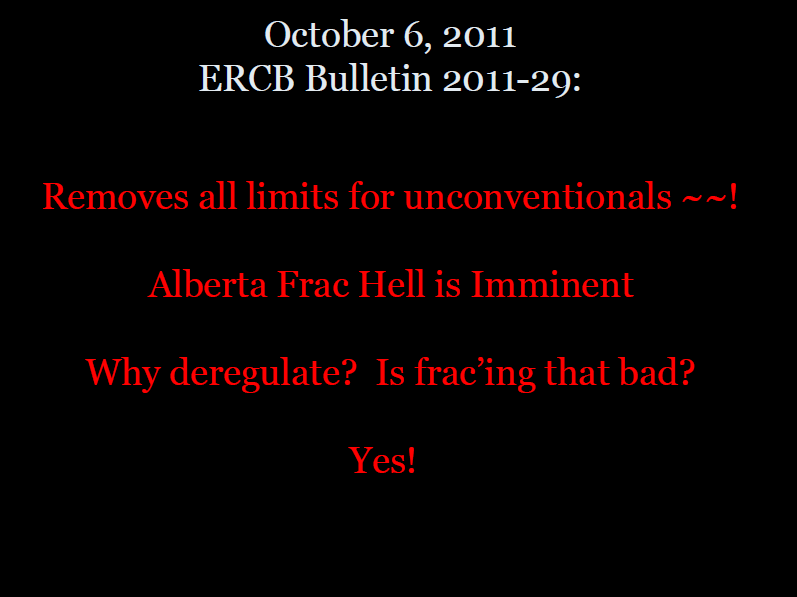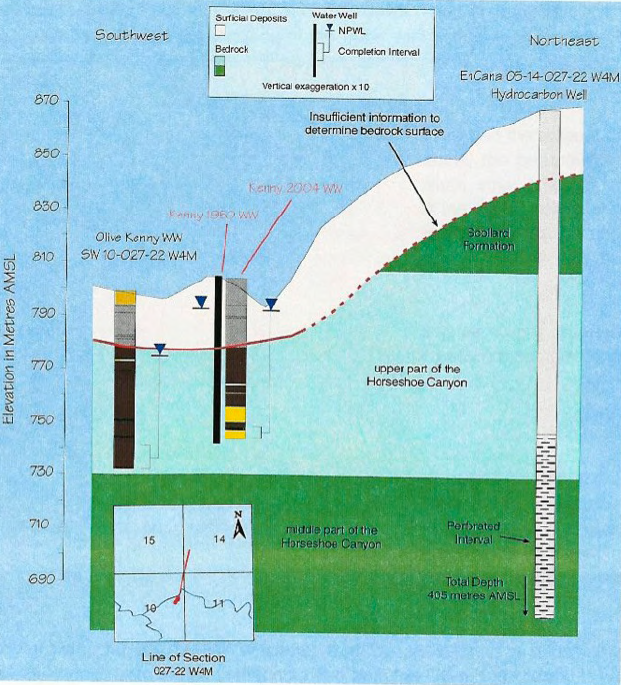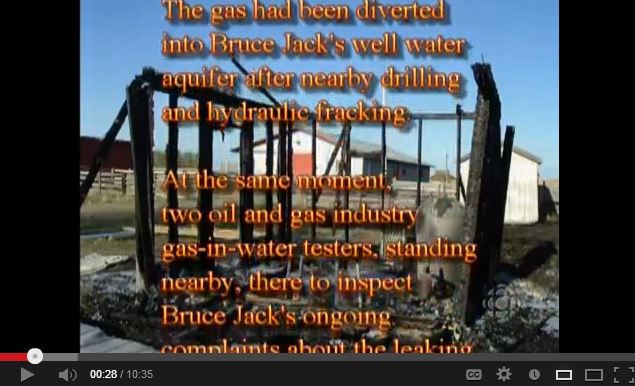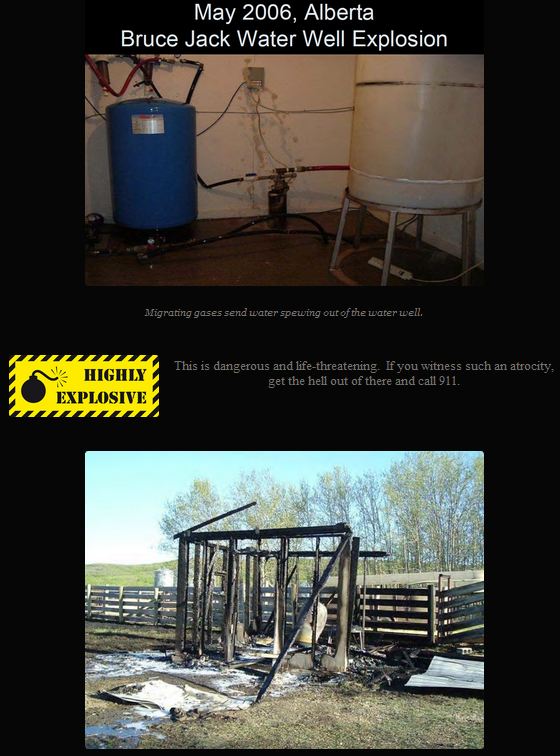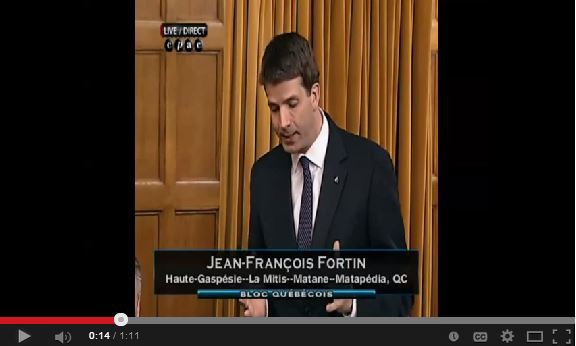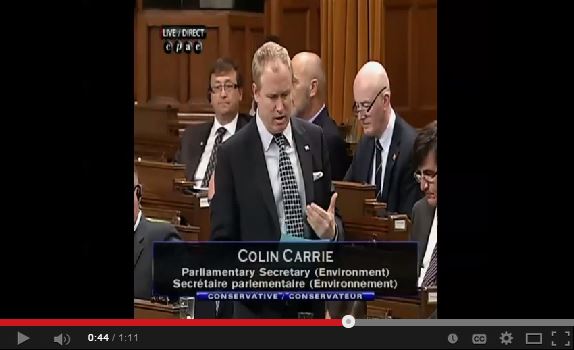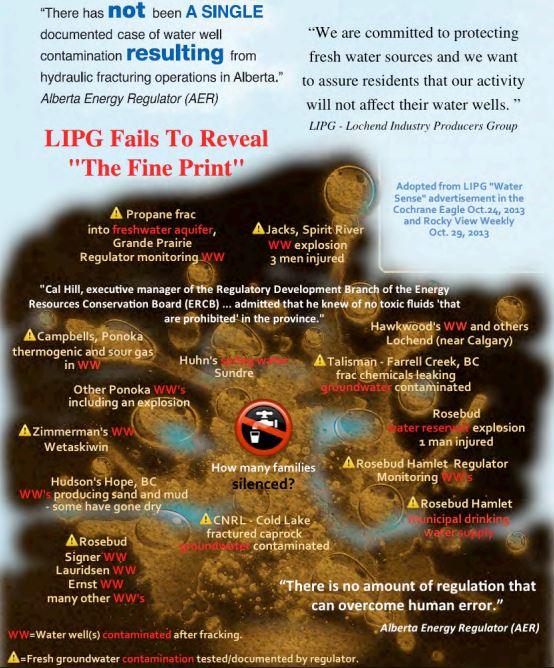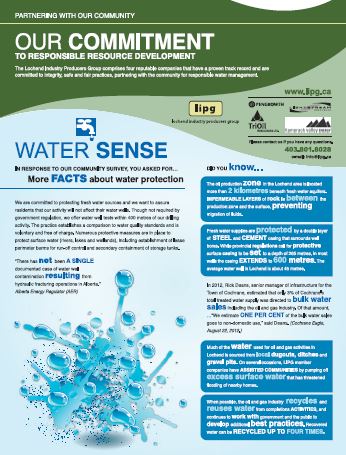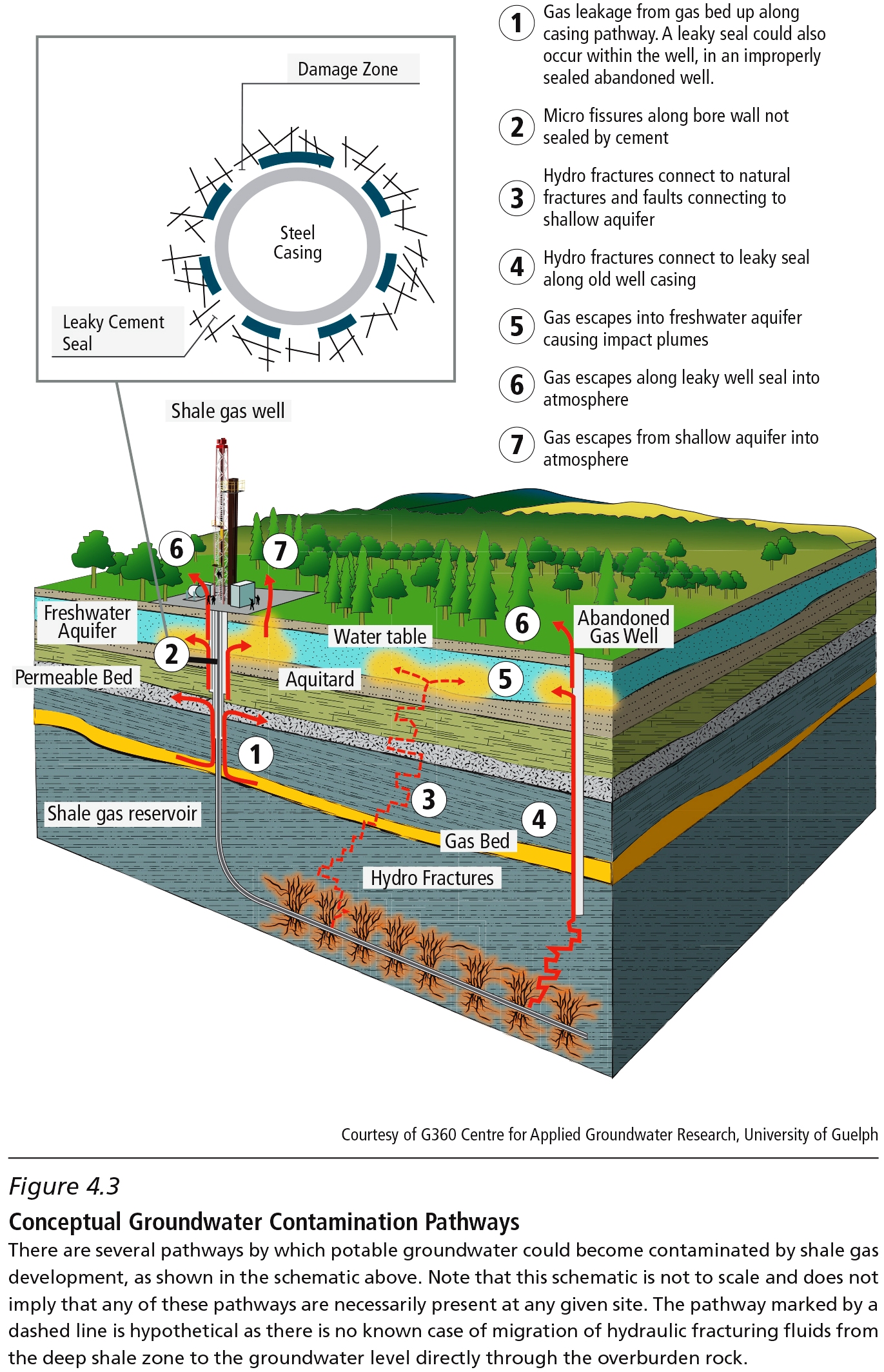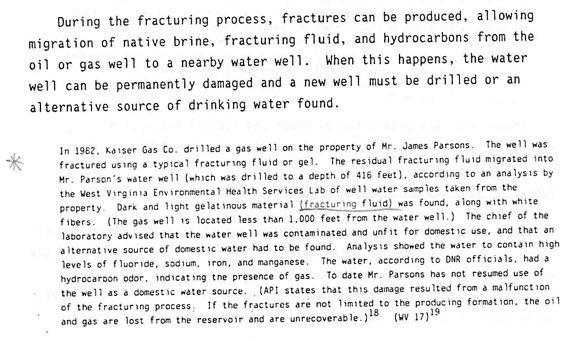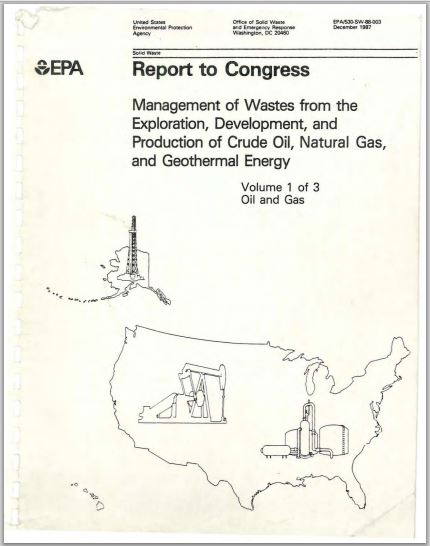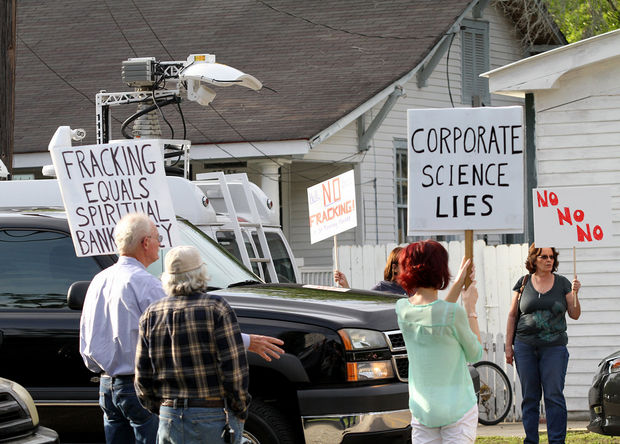Long-awaited fracking report highlights known unknowns by Paul Schneidereit, May 6, 2014, Chronicle Herald
Last week, the wait was over. … Anyone hoping for a definitive answer was disappointed. The expert panel basically said that while fracking’s economic potential in Canada is undoubtedly vast, too much remains unknown to declare the process safe for either people or the environment. Better data collection, monitoring and regulatory oversight are all needed going forward, they said.
…
The “greatest threat to groundwater is gas leakage from wells,” the report states, while “even the best existing practices cannot assure long-term prevention.”
…
Unfortunately, some Canadian politicians and shale gas industry spokesmen reacted to the report by immediately repeating the claim that no proof of groundwater contamination from fracking itself has ever been documented.
…
In Nova Scotia, which the panel saw as a province with substantial shale gas potential, particularly in the Horton Bluff gas shales and tight gas sandstones, specific information on possible deposits and the area’s “rock mechanics” is reportedly sparse. That means that before any fracking potentially takes place here, there’s still a lot of work to do. The amount of information on fracking issues is increasing — and evolving — rapidly, said the expert panel. It’ll be interesting to see what the province’s fracking review panel, headed by Cape Breton University president David Wheeler, reports in the fall. [Emphasis added]
Canada cautions over dearth of fracking health data by Gayathri Vaidyanathan, May 5, 2014, E&E News
Shale gas extraction is happening at a rapid pace in North America even though there are large data gaps about health and environmental effects, Canada’s national research academy cautioned in a report released last week. Key questions about drilling and hydraulic fracturing impacts on earthquake risk, air pollution, health, groundwater and pathways are difficult to resolve, wrote experts with the Council of Canadian Academies in a 300-page review on shale gas.
The council was asked by Environment Canada, the nation’s version of U.S. EPA, to assess the impacts of exploring for shale gas and methods to mitigate risks. The council found that there is too little known currently about impacts to justify full-steam-ahead drilling. “Many of the pertinent questions are hard to answer objectively and scientifically, either for lack of data, for lack of publicly available data, or due to divergent interpretations of existing data,” the panel wrote.
Much of the research it examined was derived from the United States [But left out the documented proof by the US EPA of frac fluids injected deep, contaminating the Parsons water well], where shale extraction has been happening for the past two decades. Extraction in Canada has been ongoing for the past 10 years, primarily in British Columbia and Alberta.
The council found that there are few peer-reviewed scientific studies on shale gas development, and much of the information that is evolving remains proprietary. U.S. regulations do not directly oversee hydraulic fracturing chemicals, so companies have not monitored the impacts of chemical use on the environment or health, the report stated.
With respect to groundwater contamination, the report noted that scientists have a good grasp about the behavior of liquids in high-permeability reservoirs, such as sandstone, where conventional drilling has historically occurred. But they know very little about shales, which are low-permeability reservoirs, the report said. “Thus, the basic scientific knowledge needed to evaluate potential risks to groundwater on the regional scale is largely lacking,” it stated.
The council was concerned about the flow of methane into aquifers, especially from damaged wells. Most regulatory agencies require that the annular space between steel well bores and the surrounding rock be cemented to prevent leaks of oil and gas into groundwater. But the cementing is not always perfect. The process of well drilling can create microfractures in the rock, which cementing does not target, since cement powder grains are too big. The microfractures can act as conduits for the slow upward migration of gas, the report said. [Imagine the impacts after companies fractured intentionally, repeatedly, without warning before or after, directly into fresh water aquifers used by Alberta communities for their drinking water, the publicly available data and reports proving these incidents in Alberta were left out of review by the expert panel and chair.]
“Poor well construction affects the oil and gas industry as a whole and is not unique to shale gas,” the report said. “However, the problems are amplified by the potentially high number of wells associated with large-scale shale gas development and the chemical additives in fracturing fluids.” [And the dramatic repeat perforations and high pressure fracs, per well, sometimes commingled with other formations such as sands and coals as often happens in the Horseshoe Canyon, Alberta]
Cementing has been a challenge for industry, especially for horizontal wells, where it can be difficult to get cement into the part of the well that curves from vertical into horizontal. [The expert frac panel also left out of their review that the new frac “regulations” (AER Directive 083) in Alberta allow for one or zero barrier protection on horizontals, above or below the Base of Groundwater Protection]
Well integrity
It is difficult to say whether industry best practices are sufficient to ensure integrity of the wells, the report said. Tools exist to check cement integrity, such as pressure testing, which allows operators to examine small sections of the casing. But pressure testing does not reveal the condition of the well bore behind the casing, the report said. [And costs money, which many companies do not want to spend]
Acoustic devices allow the operator to study formations behind the casing, but the method is expensive and cannot reveal if gas is seeping out.
And cement bond logs can be ambiguous and do not necessarily indicate whether a leakage threat exists, the report said. Even when such tools are used to confirm integrity, they would not reveal the pathways or rate of leakage, the report stated.
Long-term impacts
The council found that it could take years for the true impacts of shale gas development to actually manifest themselves. “Some of the possible environmental effects of shale gas development, such as the creation of sub-surface pathways between the shale horizons being fractured and fresh groundwater, gas seepage from abandoned wells, and cumulative effects on the land and communities, may take decades to become apparent,” the report said.
The Canadian Association of Petroleum Producers (CAPP) said the council had not comprehensively considered government regulations that mitigate risks and address concerns over environmental impacts. “I don’t think it fully characterized the degree of regulations and policy that has been brought to bear in the past decade or two,” said David Pryce, vice president of operations at CAPP. Pryce said that Canadian producers have learned about best practices from the United States, Alberta and British Columbia, where drilling has been happening for a while. New Brunswick and Quebec have significant reserves, but the provinces have not yet fully approved fracking. Pryce argued that “going slow” on fracking, as the report seems to imply, would not allow industry to learn and refine its techniques. He characterized the council’s concern over long-term impacts as a discussion around “what-ifs.”
“You can continually study this, but at what point do you decide you have got enough degree of comfort that the management systems in place are sufficient to manage for the risk?” he asked. [Emphasis added]
Fracking Data Woefully Lacking in Canada, Reports Council of Canadian Academies, So also reported the Canadian Council of Ministers of the Environment 12 years ago:
Fracking Data Woefully Lacking in Canada, Finds Federal Report by Erika Thorkelson, May 2, 2014, desmogblog.ca
There is simply not enough reliable information to be confident about the environmental impacts of hydraulic fracturing, according to a new report released by the Council of Canadian Academies. The report, commissioned by Environment Canada, takes a broad view of the implications of “fracking,” from possible contamination of land and water to greenhouse gas (GHG) emissions to human health and social impacts. It identified several key areas of concern, particularly that pathways created by leakage of natural gas from “improperly formed, damaged or deteriorated cement seals” may contaminate ground water….
But overall, the report’s key criticism was the utter lack of reliable data on the contentious topic. “In most instances, shale gas extraction has proceeded without sufficient environmental baseline data being collected,” it concludes.
In an interview with CBC during the afternoon call-in show BC Almanac, John Cherry, the University of Guelph adjunct professor who headed up the study, pointed out that when issues do come up, industry has tended to sweep complaints under the rug.
As journalist Andrew Nikiforuk recently reported on The Tyee, a high-profile water contamination case in Alberta against natural gas giant Encana has been met with significant pushback from government. Claimant Jessica Ernst, a former environmental consultant for industry, is suing Encana and the provincial regulator for negligence and a violation of the Charter of Rights and Freedoms, respectively, in the contamination of her groundwater near the hamlet of Rosebud, Alberta.
Recently Alberta Environment sought to have the word ‘contamination’ struck from the lawsuit, as well as any other mention of polluted water wells in the region.
Nikiforuk also reports in many cases landowners who have suffered ill-effects from the fracking process have been made to sign non-disclosure agreements, making it impossible to draw reasonable conclusions about the frequency of problems or study the incidents to make future regulatory improvements.
Responding to statements by British Columbia energy minister Rich Coleman about the safety of fracking, Cherry was unequivocal: “Your minister is wrong,” he said. “There is no reason for government to be confident.”
…
Any realistic understanding of the issue will require a “crash course program of monitoring and research,” Cherry told the CBC. Similar reports decrying the shortage of data and calling for enhanced monitoring appeared recently in the United Kingdom, Germany and Australia. [Emphasis added]
[Refer also to:
Slide from Ernst presentation April 22, 2012, Prince Albert, Saskatchewan (Shale gas and oil, tight gas and coalbed methane are unconventional resources)
Monitoring was recommended by top Canadian environmental officials 12 years ago, including Dr. John Cherry. He was keynote speaker at the workshop and wrote Chapter 4 of the report. Snaps below taken May 4, 2014 from the CCME 2002 report:
Instead of monitoring, thousands of unconventional gas wells were fractured in secret above the Base of Groundwater Protection (as the Alberta regulators call it) or into the Fresh Ground Water Zone (as Dr. John Cherry and his panel calls it).
Groundwater monitoring isn’t even happening in communities with contamination proven linked to industry (Spirit River, Wetaskiwin, Ponoka, etc). Regulators lie, cover up, close cases with no resolution for harmed families as companies move down the street to frac the next community.
Slide from Ernst presentation March 15, 2012 at Eagle Hill, Alberta
Snaps below from the 2002 CCME report:
Snap from Page 26
Snap from Page 28
Snap from Page 29
Snap from Page 34
Why did Dr. John Cherry and his expert frac panel of the Council of Canadian Academies leave out the important CCME 2002 report in their 2014 report?
…
Governments back fracking development despite study calling for slowdown by Dan Barnes, May 2, 2014, Edmonton Journal
Opponents of hydraulic fracturing celebrated last week after a Calgary company abandoned plans for three wells inside Lethbridge city limits and a study commissioned by Ottawa recommended a slower pace of industry development to allow for more study of its environmental impact. However, government officials in Alberta and across Canada showed no willingness to put the brakes on fracking….
Goldenkey Oil Ltd. announced Wednesday it would not proceed with an attempt to renew mineral rights for its so-called Penny Project in southwest Lethbridge, citing robust community opposition and the prospect of a lengthy procedural battle. The company had planned to drill three wells and employ vertical fracking for oil, rather than the more common and complicated multistage hydraulic fracturing for natural gas, in the southeast Alberta city. Lethbridge mayor Chris Spearman said Goldenkey’s decision was “a huge victory for the community.”
And on Thursday, the Council of Canadian Academies released a 292-page study conducted by a panel of academics, including University of Alberta engineering professor Rick Chalaturnyk. It recommended a go-slow approach, a conclusion based on the available, and in some cases, the lack of publicly available, peer-reviewed research. … “There is reason to believe that shale gas development poses a risk to water resources, but the extent of that risk, and whether substantial damage has already occurred, cannot be assessed because of a lack of scientific data and understanding,” said the report. “There is only minimal reference literature and no peer-reviewed literature that assess the potential for the various chemicals in hydraulic fracturing fluids to persist, migrate and impact the various types of subsurface systems or to discharge to surface waters.”
The report said 10 years of hydraulic fracturing in Canada has not produced enough of a track record to assuage concerns and that more monitoring is necessary. [More? Where is there any?]
“We really do stand a chance to put in place the regulatory framework to answer the questions around environmental impact,” said Chalaturnyk. [And use reluctant Canadians, their children, farms, businesses and homes as guinea pigs?]
But federal Environment Minister Leona Aglukkaq, whose department commissioned the study in 2012, dismissed its findings.
“Shale gas deposits can be developed safely, responsibly, and in compliance with the strict rules in place to protect Canadians,” she wrote in an email to the Canadian Press. “We will continue to work with the provinces to ensure Canadians benefit from the safe, responsible development, transportation and use of our natural resources.”
Alberta Energy Minister Diana McQueen received a copy of the report on Friday and had not yet read it. However, she said fracking has been done safely in the province in the past and she is confident it will continue to be a safe process, due in part to her government’s regulatory efforts. “In Alberta we’ve certainly got strong regulations in place and we have been doing this type of development for years. The regulatory body we have in place has stringent regulations. Safety is certainly very, very important for us. I think Alberta has been a leader in this when you look at the regulatory process, the strong directives, regulations, all the things and processes we have in place, we really increased those over the years.” [Emphasis added]
[Reality Check:
Slide above from Ernst presentation in Lethbridge, November 24, 2011
Numerous briefs filed for the Ernst vs Encana lawsuit prove that both regulators in Alberta argue they owe no duty of care to anyone harmed by fracing. The energy regulator even went so far to argue successfully in court (January 18, 2013) that its governing statutes provide immunity not only “for negligence but gross negligence, bad faith and even deliberate acts.”
March 2004: EnCana’s Multiple Shallow Fracs into Fresh Water Aquifers at Rosebud, Alberta, enabled by the regulators; the community was not consulted before or warned after. Diagram from EnCana Corporation Site Investigation Report by Hydrogeological Consultants Ltd., January 2005. Official file presented in person, many witnesses attending, by Ernst to Minister of Environment at the time on March 6, 2006, Guy Boutilier, who turned his body away, to refuse receiving it.
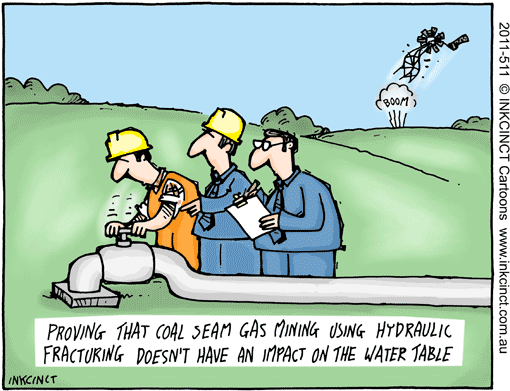
May 2006, Alberta. Bruce Jack in hospital the day of the explosion. Bruce and two industry gas-in-water testers were seriously injured and hospitalized when the methane and ethane in the Jack water well ignited during testing (by experts).
As Jack was preparing to go public with the explosion and his injuries, the local “Alberta Synergy” group betrayed Jack and quickly warned Alberta Environment of the media release being prepared. Peter Watson, Assistant Deputy Minister Alberta Environment attended the bed side of Jack, promised the world and killed the story.
The story did not resurface until much later, after the many regulator promises were broken and isotopic fingerprinting by the University of Alberta found the guilty party. CBC contacted Ernst asking for a “proven” case of groundwater contamination. Ernst connected the CBC’s Grant Gelinas to the Jacks.
Betrayal, such as was done to Bruce Jack and his family, is the real purpose of Alberta Synergy, SPOG, and even NGOs such as the Pembina Institute (it betrayed many Albertans harmed by fracing, including Ernst).
…
Politicians go on the attack after scientists call for more research into fracking by Peter O’Neil and Rob Shaw, May 1, 2014, Vancouver Sun
Deputy Premier Rich Coleman challenged Thursday the conclusions of a scientific panel into the environmental effect of shale gas development using fracking. The group of Canadian and U.S. scientists, appointed in 2011 by former federal environment minister Peter Kent to examine the sector’s potential and risks across Canada, urge a cautionary, go-slow approach until more research is done on a relatively new sector.
Coleman, responsible for an industry that Victoria considers an economic linchpin for decades, said the B.C. industry is advanced and a model for the world. “I don’t agree with them,” he told reporters. “The reality is we’ve been doing this for over 50 years, we’ve never had a contamination from a drill, we’ve never had a drill stem leak or fail.
“We do it as well or better than anybody else in the [world].”
One of the scientists on the panel, fracking expert Maurice Dusseault, challenged Coleman’s glowing portrayal of the B.C. industry
“Every regulatory jurisdiction in Canada has issues related to long-term wellbore integrity with respect to slow seepage of gas, usually intermediate-depth gas … seeping upward along the outside of the exterior casing. B.C. is not excluded,” he said in an email exchange with The Vancouver Sun.
Coleman also appeared to challenge the objectivity of Dusseault and the 13 other Canadian and U.S. scientists from a variety of disciplines who wrote the report. “Sometimes when you a read a study and somebody says they want more studies, sometimes I wonder if they are writing themselves back into the deal themselves.” Dusseault, of the University of Waterloo’s department of earth and environmental sciences, noted that more than 400,000 wells will be needed over several generations to fully exploit one of the biggest plays, the Montney field near Dawson Creek. “That is not much less than all the wells previously drilled in the Western Canada sedimentary basin. What are the environmental impacts of development at a scale so vast?” said Dusseault. “That is an absolutely legitimate question, and assurances from industry and government alone are insufficient.”
The scientists’ 292-page report says not enough is known about the potential impact of fracking on people and the environment. “The rapid expansion of shale gas development in Canada over the past decade has occurred without a corresponding investment in monitoring and research addressing the impacts on the environment, public health, and communities,” the report states. Key concerns include the degradation of surface water and groundwater, potential adverse effects on health, disruption of communities and land, and potential conflict with First Nations Rights.
Both Kent and his successor, Leona Aglukkaq, argued Thursday that the industry’s safety and environmental record is strong. “Hydraulic fracturing has been used safely in Western Canada for decades with no incidents of contamination to drinking water,” Aglukkaq said in a statement that cited recent federal moves to toughen penalties for pollution. “Shale gas deposits can be developed safely, responsibly, and in compliance with the strict rules in place to protect Canadians.” [Emphasis added]
Government, energy industry defend fracking rules by Shawn McCarthy, May 1, 2014, The Globe and Mail
The Harper government signalled Thursday that it has no intention to take over regulation of hydraulic fracturing from the provinces, despite a new report that concludes that current regulations may not be adequate to ensure public safety. Responding to a report from the Canadian Council of Academies on the impact of shale gas development, Environment Minister Leona Aglukkaq said the practice known as fracking is safe, and the provinces are effectively regulating it. [Regulation without enforcement means no regulation. In Alberta, if companies tell the regulator of non-compliant events, the AER rules them compliant. What kind of regulation is that?] “Shale gas deposits can be developed safely, responsibly, and in compliance with the strict rules in place to protect Canadians,” Ms. Aglukkaq said in a statement. [Why does the Minster not say “are developed safely”?]
The report released Thursday concluded that there isn’t enough known about the environmental and health impacts of fracking to declare it safe, and that key elements of the provinces’ regulatory systems “are not based on strong science and remain untested.”…
…
Ms. Aglukkaq’s parliamentary secretary, Colin Carrie, responded that the Western Provinces have plenty of experience overseeing the industry, and that regulators in the three Western Provinces report that there has never been a proven incident in which oil and gas fracking contaminated drinking water. “We’ll continue to work with them to make sure we have the safest use of this resource for Canadians,” he said.
The Canadian government has largely left regulation in the hands of the provinces that own the resources, but does play some role in monitoring air pollution from shale gas facilities and may be looking to expand that effort.
…
The Canadian Association of Petroleum Producers (CAPP)wants the provinces to remain the principal regulator. “We think the owners of the resources are best positioned because of that role to regulate the development of them,” CAPP vice-president David Pryce said. “The council is saying they need more information,” Mr. Pryce said. “I guess our perspective is that we’ve got a robust regulatory environment that has proven our track record in terms of our operations here.” He said both the industry and the provincial regulators will examine the report to see what further work needs to be done, and Ottawa has a role through the federal/provincial environment ministers’ forum to ensure best regulatory practices are shared across the country.
British Columbia’s Minister of Natural Gas Development Rich Coleman said his province has “the most modern regulations in Canada and one of the most up-to-date regulators in the world for shale gas development.” [The Big Lie is changing!]
Intervention concernant les risques de l’exploitation de gaz de schiste 1:11 Min. by Jean-François Fortin, May 1, 2014
Incidences environnementales liées à l’extraction du gaz de schiste au Canada
Environmental Impacts of Shale Gas Extraction in Canada
Mr. Colin Carrie, Harper Government (Ms. Aglukkaq’s) Parliamentary Secretary Environment responds with The Big Lie:
“Hydraulic fracturing, it’s been used safely in Western Canada for decades, there’s been no incidence of contamination of drinking water.”
Below, LIPG Fails to Reveal “The Fine Print”
Link Here for the pdf explanatory document of above poster
Original ad below, as it was taken out by LIPG in the Rocky View Weekly and Cochrane Eagle in 2013, presenting the source (Alberta Energy Regulator) of The Big Lie :
 Poster by Will Koop, BC Tap Water Alliance
Poster by Will Koop, BC Tap Water Alliance
November 18, 2013: Talisman Frackwater Pit Leaked for Months, Kept from the Public (the BC regulator, the OGC, and Talisman know the pit contaminated fresh drinking water about a year ago with toxic frac chemicals)
Frackwater pits in Talisman’s Farrell Creek operations in northeast BC – photo taken in March 2013. Pond A, on the far right, suffered a rupture, leaking contaminants into the soil and groundwater (Two Island Films)
…
Water moves. Massive volumes of frac fluids injected by Encana under high pressure directly into drinking water aquifers in Alberta or leaked from Talisman’s frac waste pits in BC, and methane, ethane and other gases forced to let go after being hydraulically fractured also move.
Fresh water aquifers are accessed by municipal and private citizen water wells to provide “drinking water.”
[More on the new CCA study:
Figure 4.3 Snaps above and below from Page 72 of the 2014 report by Dr. Cherry and expert panel of the Council of Canadian Academies report: Environmental Impacts of Shale Gas Extraction in Canada
“But there is in fact a documented case, and the E.P.A. report that discussed it suggests there may be more. … The E.P.A.’s 1987 report does not discuss the specific pathway that the fracking fluid or gel took to get to Mr. Parsons’ water well in West Virginia or how those fluids moved from a depth of roughly 4,200 feet, where the natural gas well was fracked, to the water well, which was about 400 feet underground. …
This well was fracked using gas and water, and with far less pressure and water than is commonly used today. … “The evidence is pretty clear that the E.P.A. got it right about this being a clear case of drinking water contamination from fracking,” said Dusty Horwitt, a lawyer…who investigated the Parsons case. …
Mr. Parsons said in a brief interview that he could not comment on the case. Court records indicate that in 1987 he reached a settlement with the drilling company for an undisclosed amount.”
Article excerpts above with emphasis added, from: A Tainted Water Well, and Concern There May Be More by Ian Urbina, August 3, 2011, New York Times
Excerpt below from The New York Times 2011 Drilling Down Documents:
“This is a 1987 report to Congress by the Environmental Protection Agency that deals with waste from the exploration, development and production of oil, natural gas and geothermal energy. It states that hydraulic fracturing, also called fracking, can cause groundwater contamination. It cites as an example a case in which hydraulic fracturing fluids contaminated a water well in West Virginia. The report also describes the difficulties that sealed court settlements created for investigators.”
Cover of the 1987 EPA Report
Fracking information meeting with Oil company and environmental specialist at the Abita Springs (Louisiana) Town Hall on Thursday May 1, 2014. (Photo by Grant Therkildsen, Nola.com | The Times-Picayune)
More on contamination and harm by fracing:
December 6, 2013: Fracking at least 100 Years Old in Alberta
March 7, 2013: Lack of adequate procedures cause of Suncor rig blowout near Hudson’s Hope ]

